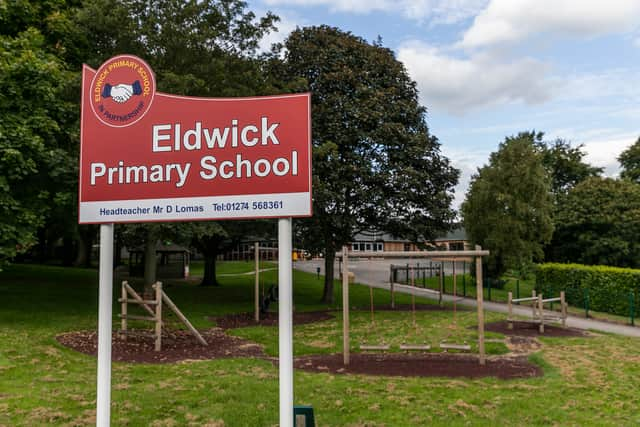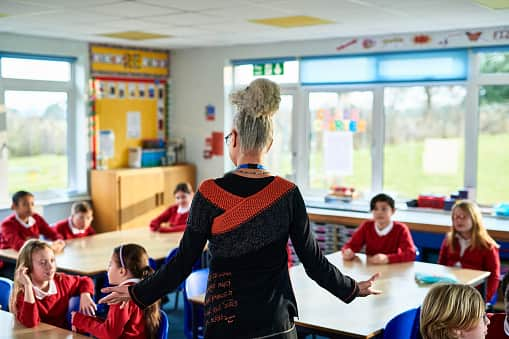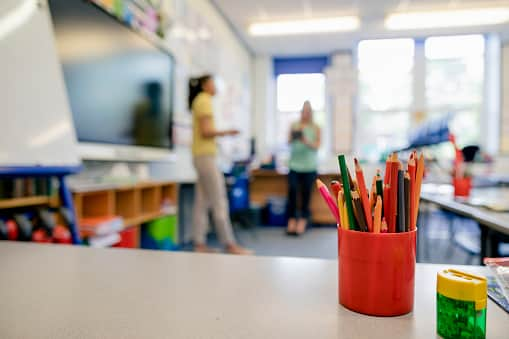School building closure: Which schools are at risk of collapse? What is RAAC? When will list be released?
This article contains affiliate links. We may earn a small commission on items purchased through this article, but that does not affect our editorial judgement.
and live on Freeview channel 276
The Government has announced the immediate closure of buildings at over 100 schools in England after they were found to be at risk of collapse due to a type of concrete that has reached the end of its safe life until safety measures are put in place.
A total of 156 schools across the country have been notified about the dangers of reinforced autoclaved aerated concrete (RAAC), a move that could potentially threaten the opening of schools next week for the start of the new term.
Advertisement
Hide AdAdvertisement
Hide AdOf the figure, just over 50 settings have already been supported to put mitigations in place this year, including through additional funding for temporary accommodation, and all children are receiving face-to-face learning.
This week, the department has contacted all 104 further settings where RAAC is currently confirmed to be present without mitigations in place, to ask them to vacate rooms or buildings that are known to contain RAAC.
It comes after reports emerged earlier this week that scores of schools could be at risk of collapse - as they had been built with “crumbly” RAAC between the 1960s to 1990s, which only has a life expectancy of around three decades.
Meanwhile, a report in June by the National Audit Office (NAO) said that the risk of injury or death from a school building collapse in England was “very likely” - as it warned of the “critical” danger to pupils and staff.
Advertisement
Hide AdAdvertisement
Hide AdHere is everything you need to know about the closure, what RAAC means and what to do if your child’s school is affected.
What is RAAC?
Reinforced autoclaved aerated concrete (RAAC) is a lightweight type of concrete. However, a large portion of the RAAC found in schools has passed the end of its safe life and is now in danger of collapsing, even though it is still made and can be used safely.


The Standing Committee on Structural Safety (SCOSS) has noted that: "Although called “concrete”, (RAAC) is very different from traditional concrete and, because of the way in which it was made, much weaker.
"RAAC was used in schools, colleges and other building construction from the 1950s until the mid-1990s. It may therefore be found in any school and college building (educational and ancillary) that was either built or modified in this time period."
Advertisement
Hide AdAdvertisement
Hide AdWhich schools are affected - full list of schools
The Department for Education has yet to release the full list, but headteachers and local authorities have been informed and will be making plans. Parents will also be contacted directly.


Some schools, however, have confirmed that they are affected by RAAC. Two primary schools in Bradford, West Yorkshire, have been partially closed on the eve of the new term after surveys found weak concrete in the buildings.
Crossflatts Primary and Eldwick Primary will both have partial closures affecting a total of eight classrooms, some staff space and a kitchen.
Will every affected school close?
No, not all schools affected by RAAC need to close. According to the government, over 50 settings have already been supported to put mitigations in place this year, including through additional funding for temporary accommodation, and all children are receiving face-to-face learning.
Advertisement
Hide AdAdvertisement
Hide Ad

This week, 104 further settings where RAAC is currently confirmed to be present without mitigations in place have been notified.
The impact of RAAC is varied; some settings may have very little RAAC present with limited disruption as a result. For example, this change in approach could lead to the temporary closure of one school space, like a single classroom. In most cases, children will be able to continue attending school as normal.
A significant proportion of the school estate was built outside the period where RAAC was used, so the government focused their efforts on buildings built in the post-war decades; 31% of our buildings were built since 2001.
Why are schools being closed now?
The Government has been aware of public sector buildings that contain RAAC since 1994 and they have been monitoring their condition since 2018. They continually assess new information and research about RAAC to ensure the safety of schools and pupils.
Advertisement
Hide AdAdvertisement
Hide AdIn 2022, the DfE sent a questionnaire to all responsible bodies, asking them to provide information to help them understand the use of RAAC across the school estate and make sure the correct support is in place.
In June, a report by the National Audit Office said that of 196 assessments that had been completed, 65 had been found to have RAAC. More have been completed over the summer.
However, according to The Times, the decision to actually close schools was taken within the last week. The report said the DfE was made aware of two more collapses of buildings with RAAC, though these are not thought to be school buildings. As a result, it notified schools that such buildings were not safe for children.
How will children continue learning?
While the government says most education settings will be unaffected by the closure, the government is making sure there is minimal disruption to education and the vast majority will remain open for face-to-face learning from the start of term.
Advertisement
Hide AdAdvertisement
Hide AdAll settings known to contain RAAC will be assigned a dedicated DfE caseworker who will work with the responsible body to assess the site’s particular needs and help them put in place individual solutions.
This could include using other on-site buildings, local spaces, safety measures in the affected area and, in some cases, erecting temporary buildings.
What can you do as a parent?
Parents whose children go to the school affected by the closure will be contacted directly and those who don’t should presume their child’s school is unaffected. The majority of schools will be fully open.
If unsure, parents can contact their local council or academy trust, if their school is part of one.
Comment Guidelines
National World encourages reader discussion on our stories. User feedback, insights and back-and-forth exchanges add a rich layer of context to reporting. Please review our Community Guidelines before commenting.
